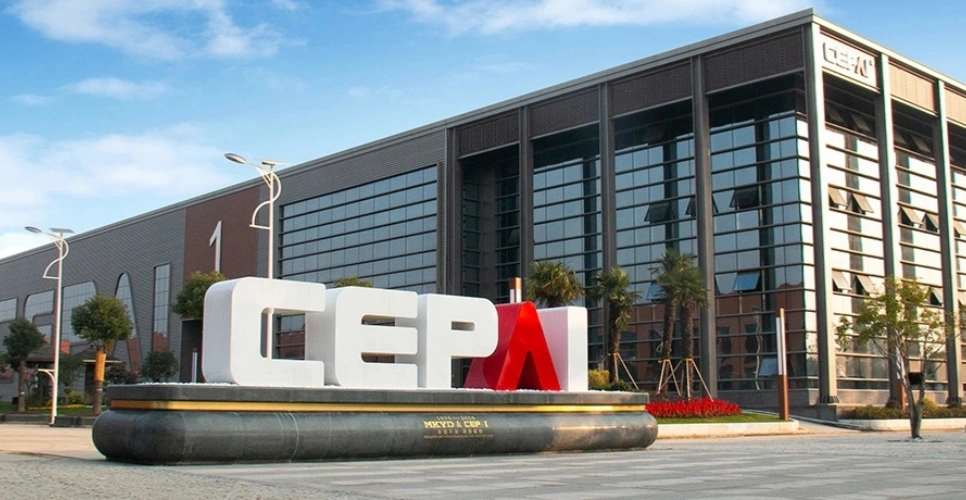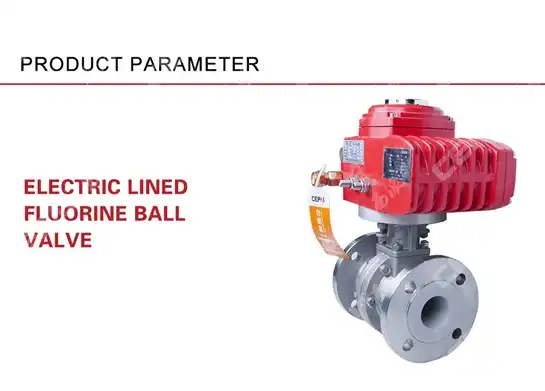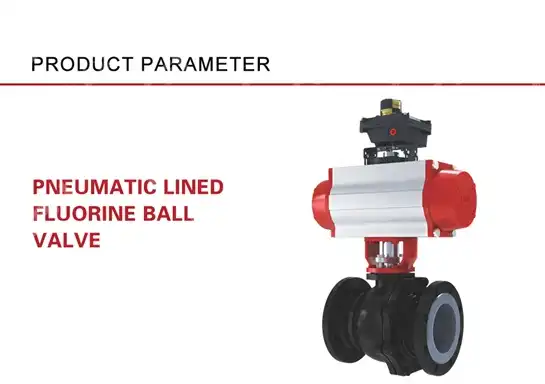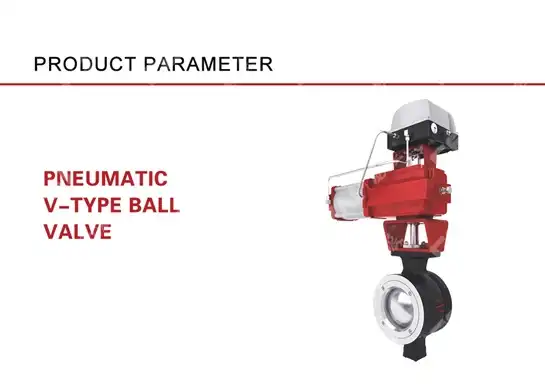What is the Importance of a Ball Valve's Flow Characteristics?
When industrial systems face catastrophic failures due to inadequate flow control, engineers often discover the root cause lies in poor ball valve selection and misunderstood flow characteristics. Understanding the importance of a Ball Valve's flow characteristics is crucial for preventing costly downtime, ensuring operational safety, and optimizing system performance. Flow characteristics determine how effectively a Ball Valve can regulate fluid flow, directly impacting process efficiency and equipment longevity. These characteristics define the relationship between valve opening and flow capacity, making them fundamental to proper valve selection and system design.
Understanding Ball Valve Flow Control Mechanisms
The flow characteristics of Ball Valve systems represent the fundamental relationship between valve opening position and the resulting flow rate through the valve. This relationship is critical because it determines how precisely operators can control fluid flow in industrial applications. A Ball Valve's flow characteristic is primarily defined by its internal geometry, particularly the shape and size of the flow path through the valve body and ball configuration. Traditional Ball Valve designs feature a full-bore or reduced-bore construction, each offering distinct flow characteristics that suit different applications. Full-bore Ball Valve configurations provide unrestricted flow when fully open, with flow characteristics that closely match the pipeline's internal diameter. This design minimizes pressure drop and turbulence, making it ideal for applications requiring maximum flow capacity. The flow characteristic curve of a full-bore Ball Valve typically shows a linear relationship between opening angle and flow capacity, particularly in the range of 20% to 80% opening. This predictable flow behavior allows engineers to accurately calculate system performance and optimize control strategies. Reduced-bore Ball Valve designs offer different flow characteristics, with a smaller flow path that creates higher velocity through the valve. These characteristics make reduced-bore Ball Valve units suitable for applications requiring higher pressure drops or where precise flow control is more important than maximum flow capacity. The flow characteristic curve of reduced-bore designs shows a more complex relationship between opening position and flow rate, with steeper gradients at certain opening percentages that can provide enhanced control sensitivity in specific operating ranges.
-
V-Port Ball Valve Flow Optimization

V-port Ball Valve configurations represent advanced flow characteristic engineering, where the ball contains a V-shaped notch that creates unique flow patterns. These specialized Ball Valve designs offer superior flow characteristics for control applications, providing more linear flow relationships across a wider range of opening positions. The V-port geometry creates a characterized flow pattern that closely approximates equal percentage flow characteristics, making these Ball Valve units ideal for process control applications where precise flow modulation is essential. The flow characteristics of V-port Ball Valve systems allow for excellent turndown ratios, meaning they can effectively control flow from very low rates to maximum capacity. This wide operating range makes V-port Ball Valve designs particularly valuable in applications where flow requirements vary significantly. The characterized flow profile ensures that small changes in valve position produce proportional changes in flow rate, providing operators with predictable and responsive control capabilities.
Ball Valve Flow Coefficient and Performance Parameters
The flow coefficient (Cv) is a fundamental parameter that quantifies Ball Valve flow characteristics and determines the valve's capacity to handle fluid flow under specific conditions. This coefficient represents the flow rate in gallons per minute of water at 60°F that will pass through a Ball Valve with a pressure drop of one pound per square inch. Understanding Cv values is essential for proper Ball Valve selection, as it directly correlates to the valve's flow characteristics and system performance capabilities. Different Ball Valve designs exhibit varying Cv values based on their internal geometry and construction features. Full-bore Ball Valve configurations typically provide the highest Cv values for a given nominal diameter, reflecting their superior flow characteristics and minimal flow restriction. Reduced-bore Ball Valve designs have lower Cv values due to their restricted flow path, but this can be advantageous in applications requiring higher pressure drops or enhanced control sensitivity. The relationship between Cv and valve opening position defines the inherent flow characteristic of each Ball Valve type. Flow characteristics become particularly important when considering system dynamics and control loop performance. A Ball Valve with well-defined flow characteristics allows process control systems to maintain stable operation across varying load conditions. Engineers must consider how the Ball Valve's flow characteristics will interact with system pressure drops, piping configuration, and downstream equipment to ensure optimal performance. Proper understanding of these parameters prevents issues such as cavitation, excessive wear, and control instability that can result from mismatched flow characteristics.
-
Pressure Drop and Flow Velocity Considerations
The flow characteristics of Ball Valve installations significantly impact pressure drop across the valve and downstream system components. Ball Valve designs with superior flow characteristics minimize unnecessary pressure losses while maintaining adequate control authority. The geometry of the flow path through the Ball Valve determines how smoothly fluid transitions from the upstream piping, through the valve, and into the downstream system. Poor flow characteristics can create turbulence, energy losses, and potential damage to sensitive downstream equipment. Velocity profiles through Ball Valve assemblies vary depending on the specific flow characteristics of each design. Full-bore Ball Valve configurations maintain relatively uniform velocity profiles, reducing turbulence and minimizing wear on internal components. Characterized Ball Valve designs, such as V-port configurations, may create controlled velocity changes that enhance mixing or provide specific flow patterns beneficial to the process. Understanding these velocity effects is crucial for predicting long-term performance and maintenance requirements.
Impact of Ball Valve Flow Characteristics on System Efficiency
System efficiency directly correlates with the flow characteristics of installed Ball Valve components throughout the facility. When Ball Valve selections match the required flow characteristics for each application, overall system performance improves dramatically. Properly characterized Ball Valve installations reduce energy consumption by minimizing unnecessary pressure drops and eliminating flow restrictions that force pumps and compressors to work harder. This optimization extends equipment life and reduces operating costs significantly. The flow characteristics of Ball Valve systems affect not only immediate energy consumption but also long-term reliability and maintenance requirements. Ball Valve designs with appropriate flow characteristics for their applications experience less cavitation damage, reduced erosion, and decreased wear on sealing surfaces. These benefits translate to longer service intervals, reduced maintenance costs, and improved system availability. Industries such as oil and gas, chemical processing, and power generation rely heavily on optimized Ball Valve flow characteristics to maintain profitable operations. Process stability represents another critical benefit of properly matched Ball Valve flow characteristics. When flow characteristics align with process requirements, control systems can maintain tighter regulation of process variables such as temperature, pressure, and composition. This improved control reduces product variability, minimizes waste, and enhances overall process efficiency. Manufacturing facilities utilizing Ball Valve systems with optimized flow characteristics often report significant improvements in product quality and production throughput.
-
Advanced Flow Characteristic Applications
Modern industrial applications increasingly demand sophisticated Ball Valve flow characteristics to meet stringent performance requirements. High-performance Ball Valve designs incorporate advanced materials and precision manufacturing to achieve superior flow characteristics that support critical processes. These specialized Ball Valve configurations may feature custom-profiled flow paths, enhanced sealing systems, and integrated position feedback to provide unprecedented control accuracy and reliability. The integration of smart technology with Ball Valve flow characteristics enables real-time monitoring and optimization of system performance. Advanced Ball Valve systems can provide continuous feedback on flow rates, pressure drops, and valve position, allowing operators to optimize flow characteristics dynamically based on changing process conditions. This capability represents the future of flow control technology, where Ball Valve systems actively contribute to process optimization and predictive maintenance strategies.
Ball Valve Selection Based on Flow Requirements
Selecting the appropriate Ball Valve based on flow characteristics requires comprehensive analysis of system requirements, operating conditions, and performance expectations. Engineers must evaluate factors including flow rate ranges, pressure conditions, fluid properties, and control accuracy requirements when choosing Ball Valve designs. The flow characteristics of different Ball Valve configurations make some designs better suited for on/off service, while others excel in throttling and control applications. Flow characteristic analysis should consider both steady-state and dynamic operating conditions to ensure selected Ball Valve systems can handle all anticipated scenarios. Transient conditions, such as startup and shutdown sequences, may impose different flow characteristic requirements than normal operation. Ball Valve selections must accommodate these varying conditions while maintaining reliable performance and adequate service life. Proper analysis prevents oversizing or undersizing valves, both of which can compromise system performance and efficiency. The economic impact of Ball Valve flow characteristics extends beyond initial purchase price to include installation costs, energy consumption, and lifecycle maintenance expenses. Ball Valve systems with superior flow characteristics may command higher initial costs but provide substantial savings through reduced energy consumption and extended service life. Life-cycle cost analysis should include the value of improved process control, reduced downtime, and enhanced safety that result from properly selected Ball Valve flow characteristics.

-
Customization and Special Applications
Many industrial applications require customized Ball Valve flow characteristics to meet unique process requirements or challenging operating conditions. Specialized Ball Valve designs can incorporate modified ball profiles, custom seat configurations, or enhanced materials to achieve specific flow characteristics not available in standard products. These custom solutions ensure optimal performance in demanding applications such as high-temperature service, corrosive environments, or critical safety systems. The development of specialized Ball Valve flow characteristics often involves computational fluid dynamics analysis and extensive testing to validate performance predictions. Advanced manufacturing techniques enable the production of complex internal geometries that optimize flow characteristics for specific applications. These capabilities allow Ball Valve manufacturers to provide solutions that maximize system performance while meeting stringent industry standards and regulatory requirements.
Maintenance and Longevity of Ball Valve Flow Performance
Maintaining optimal Ball Valve flow characteristics throughout the service life requires proper installation, operation, and maintenance practices. Flow characteristics can degrade over time due to wear, corrosion, or contamination of internal surfaces. Regular inspection and maintenance ensure that Ball Valve systems continue to provide the flow characteristics necessary for proper system operation. Predictive maintenance strategies can identify changes in flow characteristics before they impact process performance or cause equipment damage. The materials of construction significantly influence how well Ball Valve flow characteristics are maintained over time. High-quality materials resist wear and corrosion, preserving the precise geometries that determine flow characteristics. Ball Valve designs incorporating advanced materials such as hardened stainless steels, ceramic coatings, or specialized alloys maintain superior flow characteristics even in demanding service conditions. Investment in quality materials pays dividends through extended service life and consistent performance. Proper training for operations and maintenance personnel ensures that Ball Valve flow characteristics are preserved through correct handling and maintenance procedures. Understanding how different maintenance activities affect flow characteristics helps technicians make informed decisions about repair versus replacement options. Documentation of flow characteristic changes over time provides valuable data for optimizing maintenance schedules and improving Ball Valve selection for future projects.
Conclusion
Ball Valve flow characteristics fundamentally determine system performance, energy efficiency, and operational reliability across industrial applications. Understanding these characteristics enables engineers to select appropriate valve solutions that optimize process control, minimize energy consumption, and extend equipment life. The relationship between valve geometry, flow coefficient, and system requirements directly impacts the success of fluid handling systems, making flow characteristic analysis an essential component of proper engineering design.
Cooperate with CEPAI Group Co., LTD.
As a leading China Ball Valve manufacturer and China Ball Valve supplier, CEPAI Group Co., LTD. brings over 15 years of specialized expertise in high-performance valve manufacturing to serve global industrial markets. Established in January 2009 with a registered capital of 200 million yuan, our company operates from a state-of-the-art 56,000 square meter facility in Jiangsu Province, utilizing the longest high-precision intelligent manufacturing flexible production line in the Asia Pacific region. Our commitment to excellence has earned recognition as a national high-tech enterprise and recipient of the prestigious Mayor Quality Award.
CEPAI's advanced manufacturing capabilities include comprehensive API certifications (API Q1, API 6A, API 6D, API 16C, API 602), ISO quality systems, and specialized SIL certifications for Ball Valve products. Our China Ball Valve factory incorporates cutting-edge intelligent manufacturing technologies with 156 million yuan invested in factory automation and digitalization. As a trusted China Ball Valve wholesale provider, we maintain supplier qualifications with major oil companies including PetroChina, Sinopec, and CNOOC, demonstrating our commitment to delivering High Quality Ball Valve solutions.
Our comprehensive product portfolio addresses diverse industrial applications from oil and gas drilling to petrochemical processing, power generation, and water treatment systems. Whether you need standard Ball Valve for sale configurations or customized solutions with specific flow characteristics, CEPAI's engineering team provides expert technical consultation, pre-sales support, and after-sales service guarantees. Our competitive Ball Valve price structure, combined with exceptional product quality and comprehensive service capabilities, makes CEPAI your optimal partner for critical valve applications. Contact our technical specialists at cepai@cepai.com to discuss your specific requirements and discover how our innovative Ball Valve solutions can optimize your system performance.
FAQ
Q: What factors determine a ball valve's flow characteristics?
A: Ball valve flow characteristics are determined by internal geometry, ball design (full-bore, reduced-bore, or V-port), seat configuration, and the relationship between valve opening angle and flow capacity.
Q: How do V-port ball valves differ from standard ball valves in flow control?
A: V-port ball valves provide superior flow characteristics with more linear control across wider opening ranges, offering better turndown ratios and precise flow modulation compared to standard ball valves.
Q: What is the significance of Cv (flow coefficient) in ball valve selection?
A: Cv represents the flow capacity of a ball valve under standard conditions, directly indicating the valve's ability to handle specific flow rates and helping engineers properly size valves for applications.
Q: How do ball valve flow characteristics affect system energy efficiency?
A: Proper flow characteristics minimize pressure drops, reduce turbulence, and optimize flow patterns, leading to lower energy consumption and reduced operating costs throughout the system lifecycle.
References
1. "Flow Control Engineering Handbook" by David R. Hoyle, Published by Academic Press Engineering Division
2. "Industrial Valve Technology: Design, Operation and Maintenance" by L.K. Sharma, McGraw-Hill Professional Engineering
3. "Fluid Flow in Valve and Pipeline Systems: Analysis Methods and Design Guidelines" by Robert P. Benedict, Marcel Dekker Technical Publications
4. "Control Valve Handbook: Fourth Edition" by Emerson Process Management, Fisher Controls International
_1746598557316.webp)
Get professional pre-sales technical consultation and valve selection services, customized solution services.

About CEPAI


